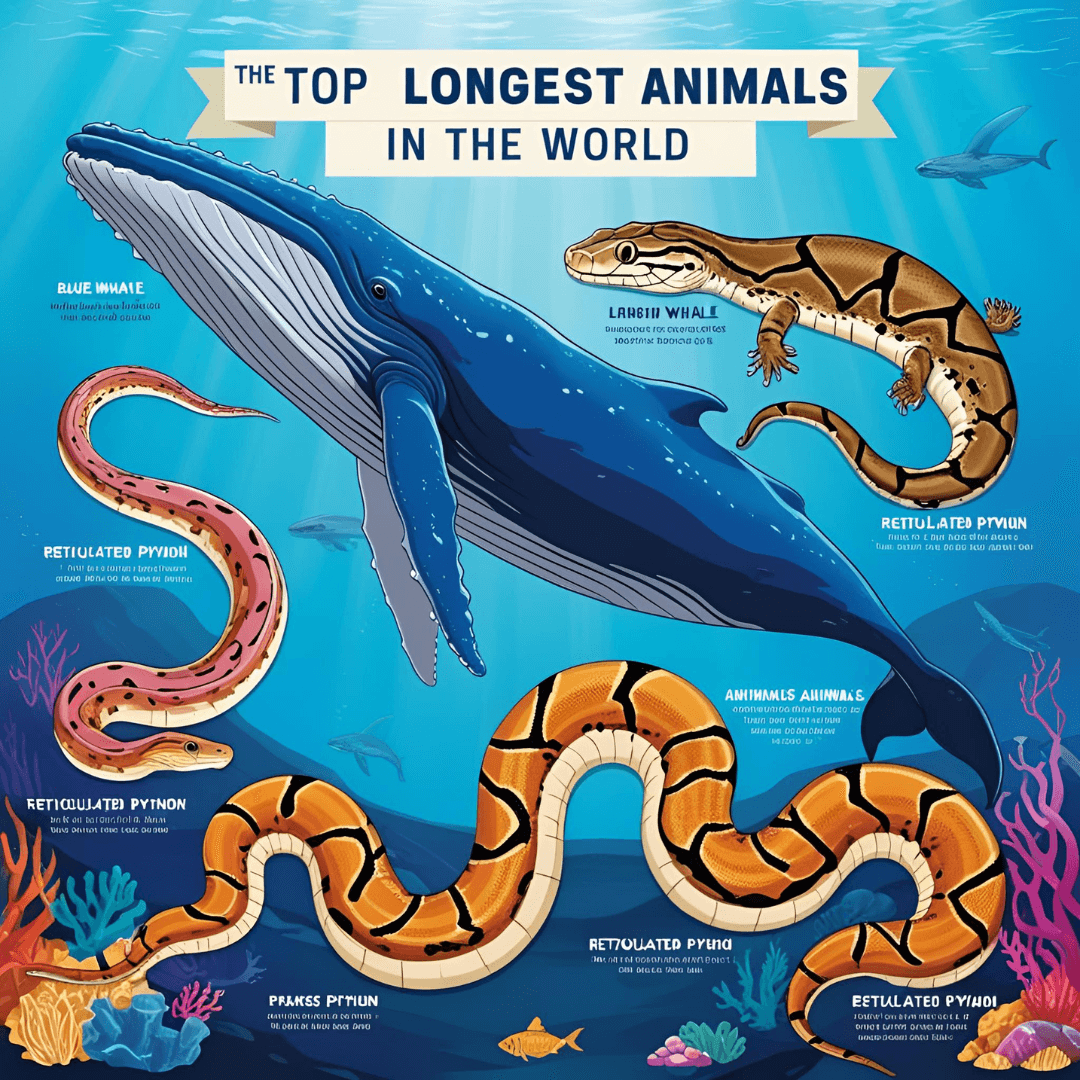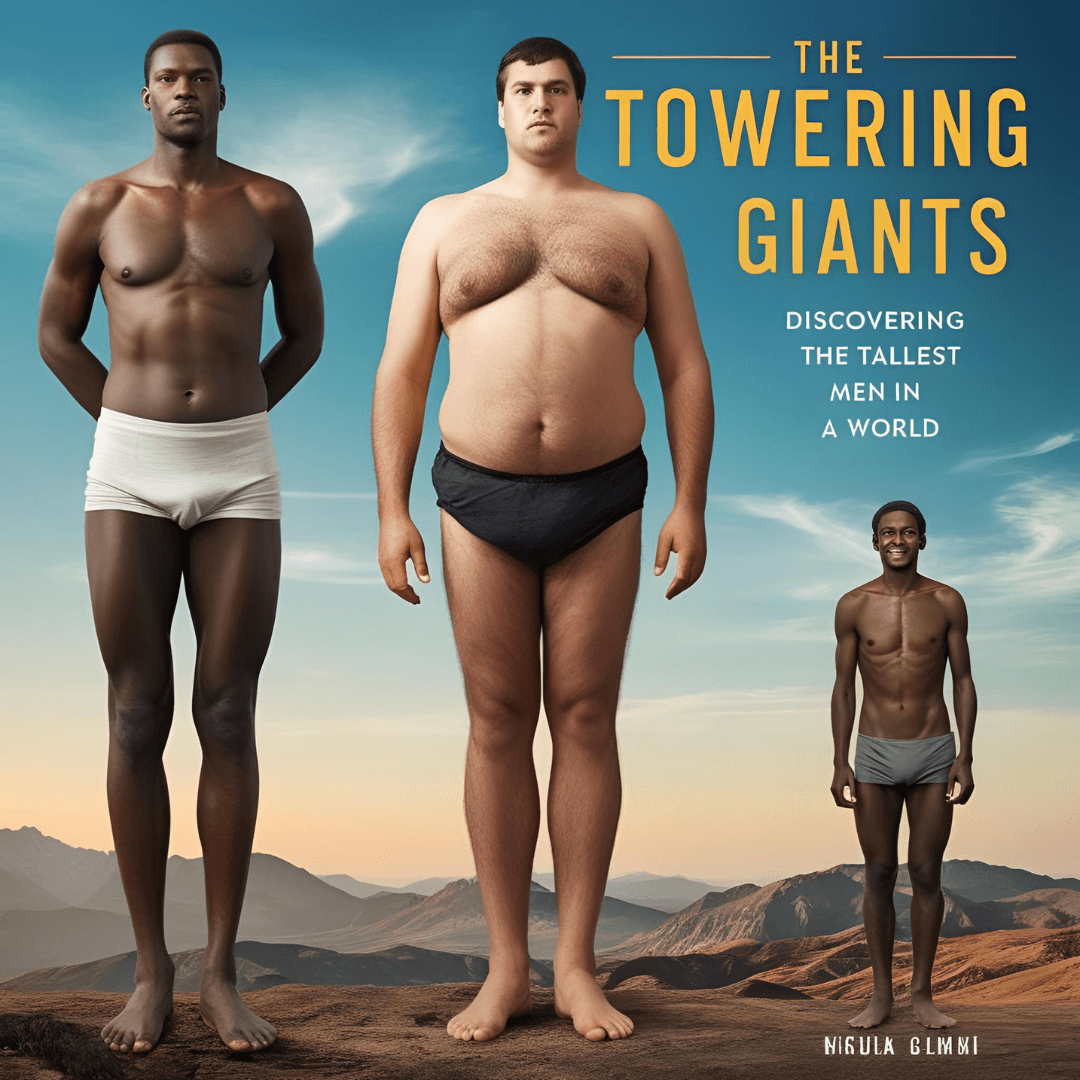When we talk about large animals, the blue whale often dominates the conversation. But length alone tells a different story — one filled with surprises from the deepest parts of the oceans to the dense jungles of Southeast Asia. Nature, in all its creativity, has shaped some of its creatures to reach incredible lengths, often for reasons of survival, predation, and adaptation to their environments. In this post, we’ll dive into the list of the longest animals on Earth and uncover the fascinating reasons why they stretch to such astounding sizes. Spoiler alert: not all giants are what they seem!
1. Bootlace Worm (Lineus longissimus)
Approximate Length: Up to 55 meters (180 feet)
Taking the undisputed title of the longest animal in the world is the bootlace worm, an unassuming yet remarkable marine invertebrate. Found mostly along the shores of the North Sea and parts of the Atlantic Ocean, the bootlace worm looks like nothing more than a slimy strand of brown spaghetti. But when fully stretched, it can measure longer than an Olympic-sized swimming pool!
Why So Long?
The bootlace worm has an elastic body structure that allows it to extend or contract dramatically. This ability is a great evolutionary advantage: it helps the worm navigate the tight crevices of rocky seafloors in search of prey. It also uses a unique defense mechanism, releasing a toxic mucus that can paralyze small marine creatures. Its extreme length allows it to spread over large areas, increasing its chances of both finding food and avoiding predators.
2. Siphonophore (Praya dubia)
Approximate Length: Over 40 meters (130 feet)
Deep beneath the ocean's surface, in the dark depths of the pelagic zone, swims the mesmerizing siphonophore. At first glance, it looks like one long animal, but it's actually a colony of genetically identical units called zooids, each specialized for different tasks such as feeding, reproduction, or locomotion.
Why So Long?
Being long in the deep sea is a clever adaptation. The siphonophore’s sprawling network of stinging tentacles creates an enormous trap for prey like plankton and small fish. Since food is scarce in the deep ocean, having a greater surface area helps increase the chances of a successful catch. Additionally, its length allows it to spread out its buoyant, bioluminescent parts, making it one of the most ghostly spectacles of the deep sea.
3. Blue Whale (Balaenoptera musculus)
Approximate Length: Up to 30 meters (98 feet)
While the blue whale may not be the longest in terms of pure measurement, it holds the crown for the largest animal ever to live by mass and volume. A fully grown blue whale can weigh as much as 200 tons — equivalent to about 33 elephants!
Why So Long?
The blue whale’s immense length helps it maximize its feeding efficiency. It’s a filter feeder, scooping up mouthfuls of krill-laden water and filtering it through its baleen plates. The larger the mouth, the more krill it can consume in one gulp. Their streamlined, lengthy bodies also allow them to migrate thousands of miles across oceans, from warm breeding grounds to cold, nutrient-rich feeding areas. Size offers them protection too, as there are very few natural predators capable of taking on an adult blue whale.
4. Giant Oarfish (Regalecus glesne)
Approximate Length: Up to 11 meters (36 feet)
The giant oarfish, sometimes called the "king of herrings," is a creature straight out of maritime legends. With its long, ribbon-like body and shimmering, reflective scales, the oarfish is likely the origin of many ancient sea serpent tales.
Why So Long?
Living in the deep sea, the oarfish uses its length to move gracefully through the water with minimal energy. Unlike fast predators, the oarfish feeds on plankton and small crustaceans, filtering them through gill rakers. A long, slender body helps it remain neutrally buoyant and maneuver in the deep ocean’s gentle currents. Its elongated dorsal fin, which runs the entire length of its body, helps with slow, undulating propulsion.
5. Reticulated Python (Malayopython reticulatus)
Approximate Length: Up to 10 meters (33 feet)
The reticulated python is the longest snake species on Earth. Native to Southeast Asia, these non-venomous constrictors are powerful predators capable of taking down animals as large as deer and pigs.
Why So Long?
For snakes, length equals strength and versatility. A longer body allows the python to wrap around its prey with more surface area, increasing the pressure it can exert to suffocate its target. Additionally, their elongated, muscular bodies are ideal for navigating complex environments like dense forests, swamps, and even rivers. Some reticulated pythons are also excellent swimmers, with their length helping them move smoothly through water while searching for prey.
Honorable Mentions:
Green Anaconda (Eunectes murinus): While not as long as the reticulated python, this South American giant holds the title for the heaviest snake.
Giant Squid (Architeuthis dux): Growing up to 12-13 meters (43 feet), the giant squid's tentacles make it one of the ocean's great leviathans.
Leatherback Sea Turtle (Dermochelys coriacea): Though not incredibly long, its massive size and migratory nature deserve recognition.
The Science Behind Their Length
So, why do these animals evolve to such astonishing lengths? There isn’t a one-size-fits-all answer, but several themes emerge across species:
Efficient Movement:
Long, slender bodies help many of these animals move efficiently through their environments. Whether it's snaking through dense jungle or gliding through the ocean's depths, length offers flexibility and streamlined travel.Feeding Strategies:
Many of these giants are filter feeders or ambush predators. A larger body or longer tentacles means a wider reach for catching prey, especially in nutrient-scarce environments like the deep sea.Survival and Reproduction:
Bigger animals often have fewer predators. Larger size can also mean greater energy stores, allowing for longer migrations and better chances of finding a mate.Structural Simplicity:
Interestingly, many of the longest animals (like worms and siphonophores) are structurally simple, which makes it easier for them to grow to extreme lengths without the constraints that more complex organisms face.
From the astonishingly long bootlace worm to the graceful giant oarfish, the animal kingdom is filled with creatures that defy our expectations of size and scale. Their lengths aren’t just random quirks of nature — they’re finely tuned adaptations to their environments, enabling them to hunt, move, and survive in ways that shorter creatures simply can't.
Next time you hear someone mention the biggest animals in the world, remember: when it comes to longest, there’s a whole different leaderboard — and it’s just as fascinating!





